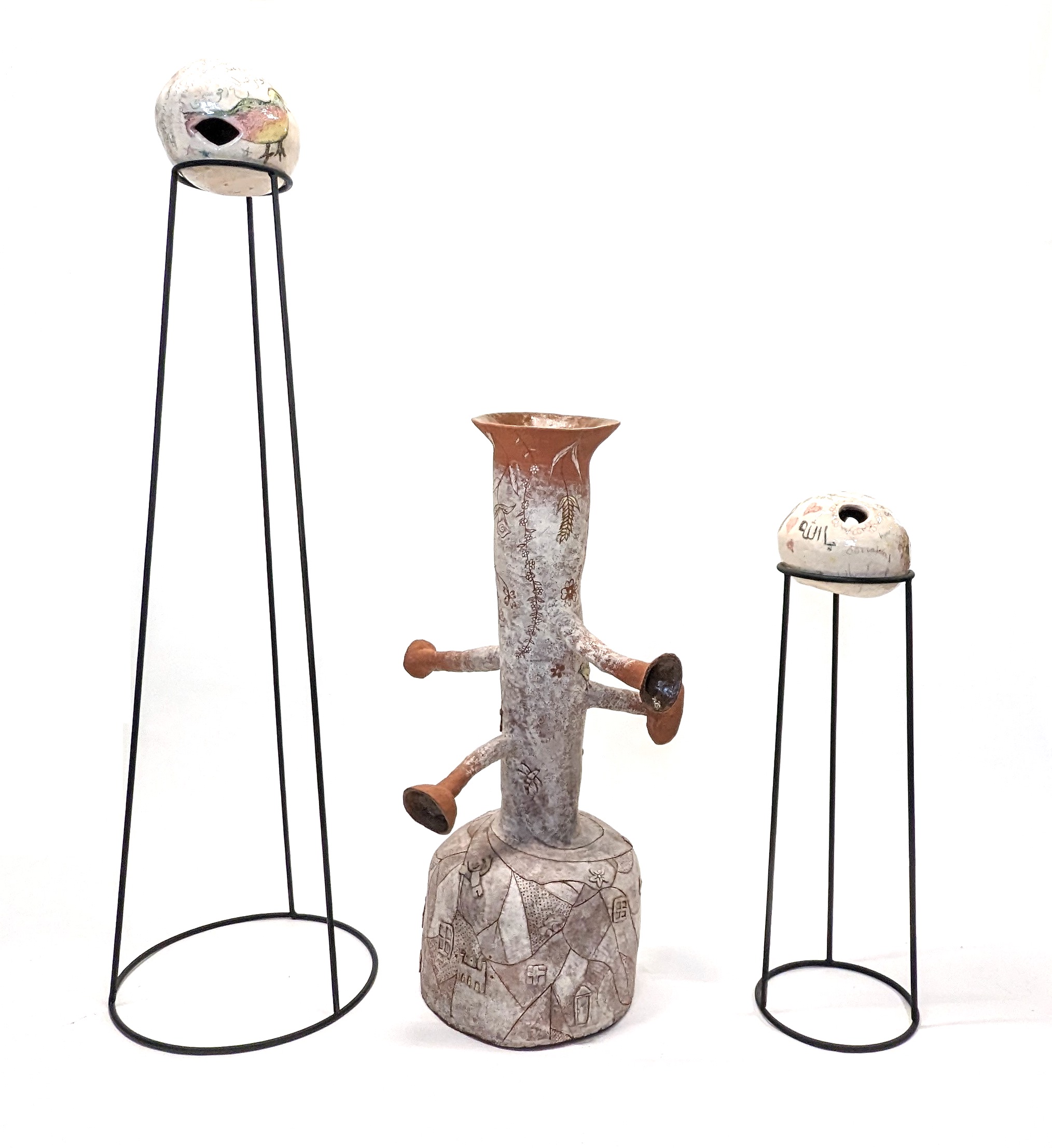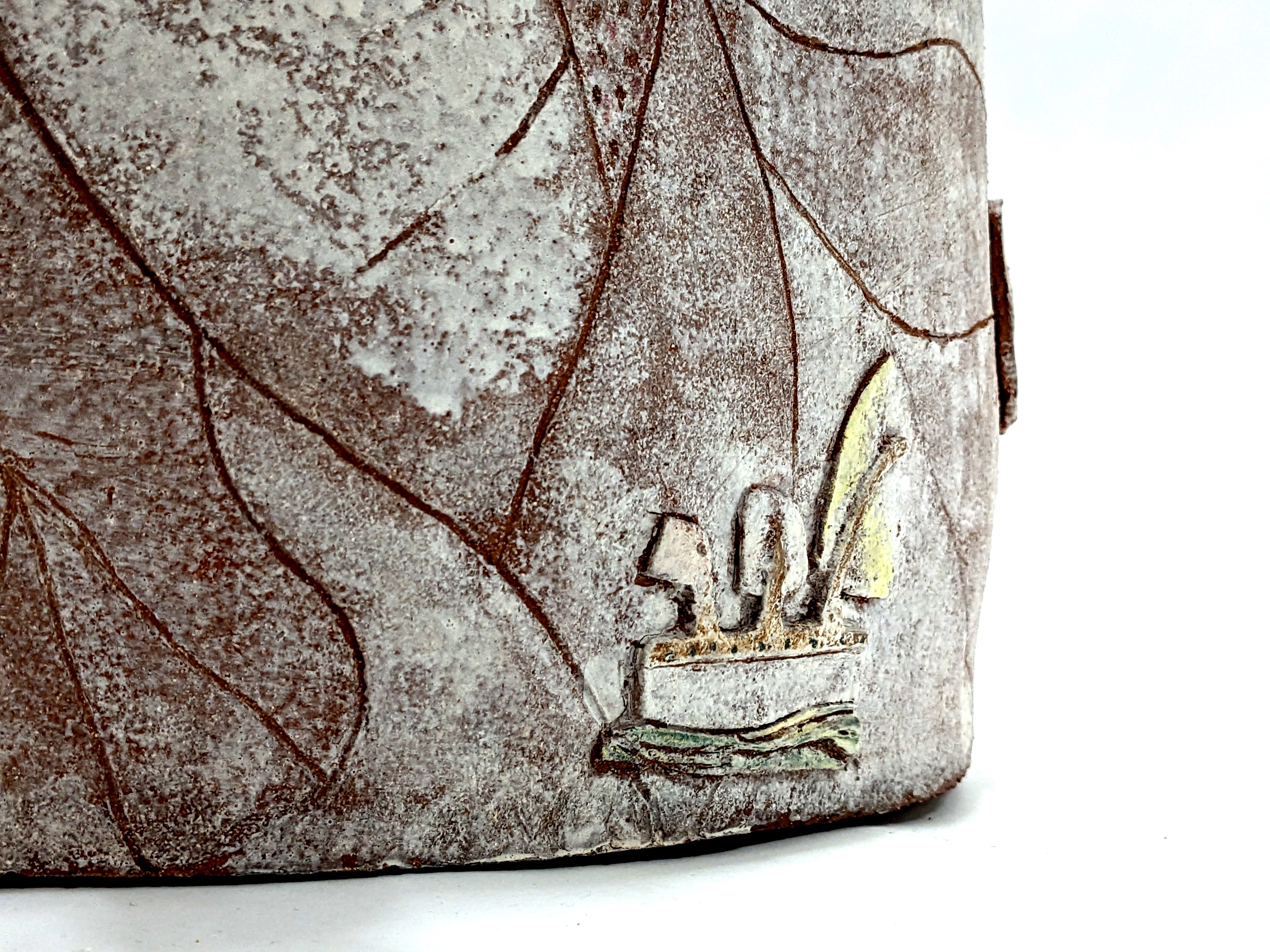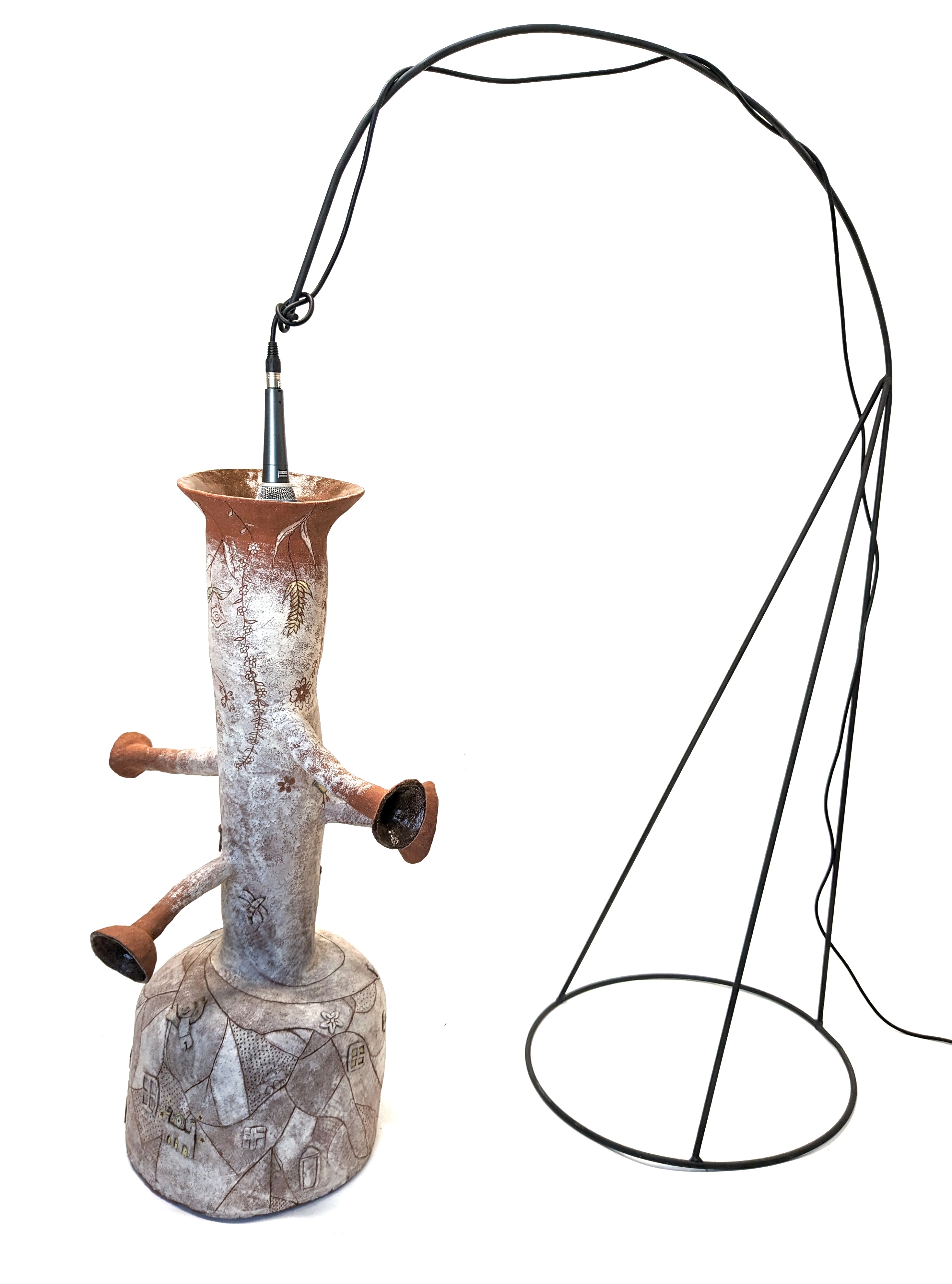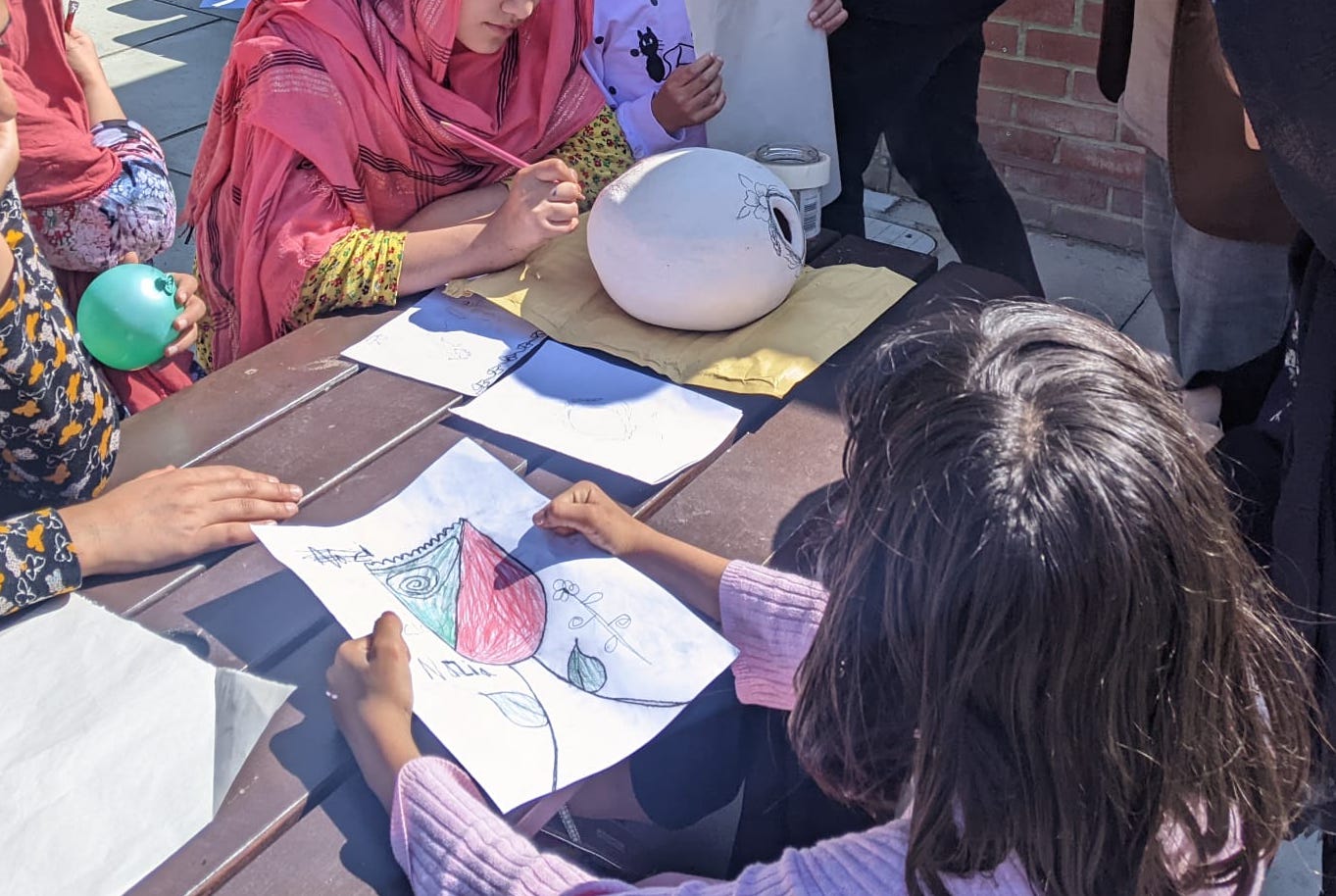TELL US OF EARTH
@tell_us_of_earth_In Collaboration with Anna Chiarini and Femi Oriogiun-Williams.
Arts Council funded commission ‘In Search of Refuge’ for Kent Medway Museum Partnership, 2022
In response to a callout by the KMMP, Abigail, Anna and Femi established Tell Us of Earth. Tell Us of Earth is an on-going research project looking to shape the future of our museums by seeking to include migrant voices in discussions around museum collections.
Artists Abigail Burt, Anna Chiarini and Femi Oriogun-Williams have been working with Refugees, Asylum seekers and first generation migrants to create storytelling vessels, lasting testimonies of the presence of voices not often represented in a museum setting.








We were drawn to the idea of vessels because they are well represented in the collection of The Beaney, and they also serve as a good metaphors for containing a multiplicity of experiences. Within The Beaney, there are Roman, Greek, and Egyptian jars and urns, Cochiti pueblo anthropomorphic vessels, and Hausa water carrying jugs. These lasting objects carry not only specific substances needed for life and death, but also the stories of the people that made them. We were particularly struck by the Cochiti Pueblo clay figures with open mouths, which pay testament to the strong oral heritage from which they arise. As refugees in their own country, storytelling becomes a means of recording Cochiti Pueblo history and preserving their identity. Our own storytelling vessels aim to tell the stories of refugees and migrants in the locality of Canterbury, and therefore add new and relevant voices to the museum collection.

The intersectionality between land rights issues and migration we saw as a story that could be told through clay, a material that comes from earth, and that within it, holds links to a distant past. We wanted to create sonic time capsules, composed from clay, whose express function was to hold within them vital stories which communicated what it was like now.
The physical act of working with clay engages the body, the hands, and transcends language. By working with clay a form of wordless communication took place, and we could draw on this aesthetic conversation in the workshops when working on the final ceramic vessels.
With these three contemporary vessels and audio piece, we hope that we reflect and communicate the voices that we heard through the focus group, workshops, and time spent with the families at the Bridging hotels. With these art works, we are adding relevancy to the museum’s collection and widening the voices represented through the addition of new objects.
